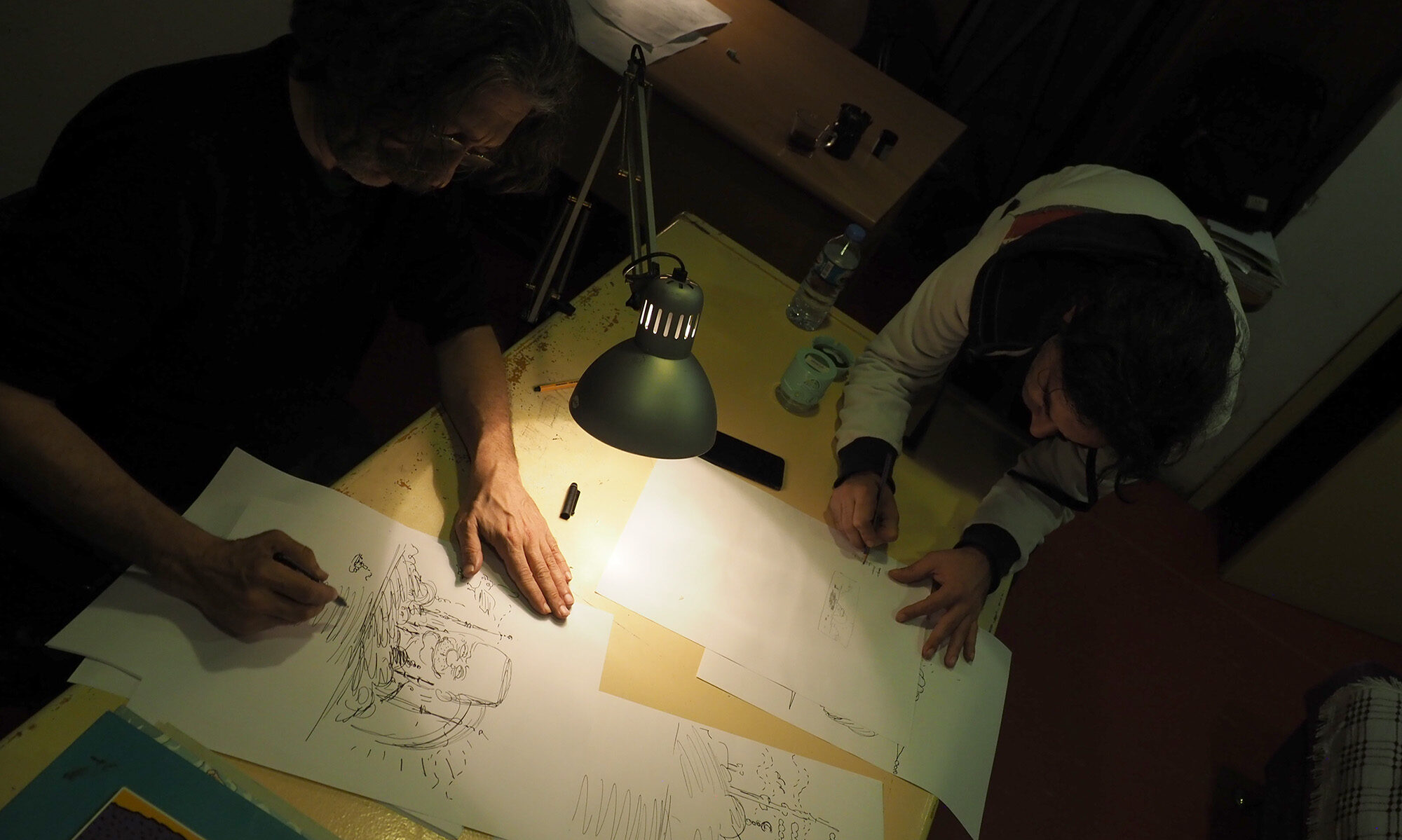I first read about him in 2019, when news media reported a brewing controversy over his scheduled visit to my alma mater. Stanford University students belonging to two left-wing advocacy groups — Jewish Voice for Peace, and Students for Justice in Palestine — invited Valley to speak and exhibit his works on campus. Stanford College Republicans swiftly mobilised opposition to the event, accusing Valley of using antisemitic tropes in his cartoons. After high-profile national commentators piled on, the university got jittery about security. The organisers were made to turn it into a closed-door event.
I interviewed Valley a few months later in his Manhattan neighbourhood, for the book Red Lines. He was not the first cartoonist I’d talked to whose criticism of Israel’s conduct had been met with attempted or actual censorship on the grounds of alleged antisemitism. But whereas most only occasionally and superficially comment on this topic, Valley’s work centres almost entirely on (American) Jewish life. His oeuvre is substantial enough to have generated an oversized 144-page volume, Diaspora Boy: Comics on Crisis in America and Israel (2017). A Vulture profile called him the “angriest cartoonist in America”, but while his style can feel like a punch to the gut, his approach is studied and intellectual.

The son of a rabbi, he believes that struggling for social justice is an essential part of his Jewish identity. “The Jewish tradition that I value is towards the liberation of communities. It’s anti-empire, anti-fascism. It’s the Passover story, the Exodus from tyranny,” he tells me over coffee. “Then, there is the very strong modern Jewish tradition of applying our own particularist Jewish philosophy toward universalist human liberation movements.”
Organized Judaism has drifted from this position. “The ‘leadership’ — the men (it’s almost always men) who claim to speak for all Jews — has marched in lockstep with the most radically extremist government in Israel’s history, sidelining the voice of the majority.”
The American Jewish community, he says in his book, has become “paralyzingly skittish” about internal dissent from the majority of American Jews who hold progressive positions. “[T]he freedom to pillory powerful people, organizations, and ideas within the Jewish community is shrinking,” he writes.
Like several cartoonists I interviewed, Valley is struck by how people can be more shocked by cartoons than by the extreme real-world happenings that those cartoons comment on. “[T]he berth for outlining, even horrifying pronouncements and behavior from extremists in the Jewish community is practically unlimited, whereas the berth for satire of such pronouncements, personalities, and policies is narrowing.”
In a 2013 cartoon, Valley criticised Abraham Foxman, head of the Anti-Defamation League (ADL), for dismissing the views of American Jews who disapproved of Israel’s settlements programme.

The cartoon, like many of Valley’s at the time, was published in the American Jewish newspaper, The Forward. ADL was an important advertiser. It was probably no coincidence that the paper subsequently ended its five-year relationship with the artist.
The Trump years heightened Valley’s alarm and anger. Community leaders embraced Donald Trump as a president who would pander to the Israeli right. The late casino magnate Sheldon Adelson, a big backer of Israel’s illegal programme of building settlements in the Occupied Territories, was also the biggest single donor to Trump’s 2016 campaign.
The infatuation with Trump persisted even as his intolerant populist politics was unleashing violence against Jews and other minorities. Trump was infamously blasé about the neo-Nazi involvement in the Unite the Right rally in Charlottesville in 2017.

Jewish critics of Israel’s behaviour are used to having their religious loyalty questioned, but the Trump era added a new dimension to this erasure, Valley says. “Many of those doing the erasing are actively or tacitly aiding in the rise of movements seeking the extermination of Jews.”
Some of his cartoons will shock readers more accustomed to the mainstream American newspaper style of editorial cartooning. But critics who claim that they resemble Nazi-era propaganda have no clue what they are talking about, he says. His grotesque and extreme satirical style was inspired by the Jewish cartoonists behind the Mad comics of the 1950s, as well as antifascist artists Otto Dix and George Grosz, whom the Nazis condemned as “degenerate”.
Valley avoids obvious antisemitic tropes. “I even go out of my way to draw Netanyahu with a more diminutive nose, for instance. I draw monsters as a monsters, and Netanyahu is a fucking monster.”

One trope that understandably offends many Jews is the comparison of Israel’s treatment of Palestinians to the Nazi Holocaust, or Shoa. Valley says he used to agree that this was too facile a comparison. But the developments of the past few years have forced a rethink. Netanyahu and some American Jewish communal leaders have made alliances with “heirs to Nazism”, he points out. “It is now fair game.”

“Like with all satire, you laugh when it’s too painful to cry.”

